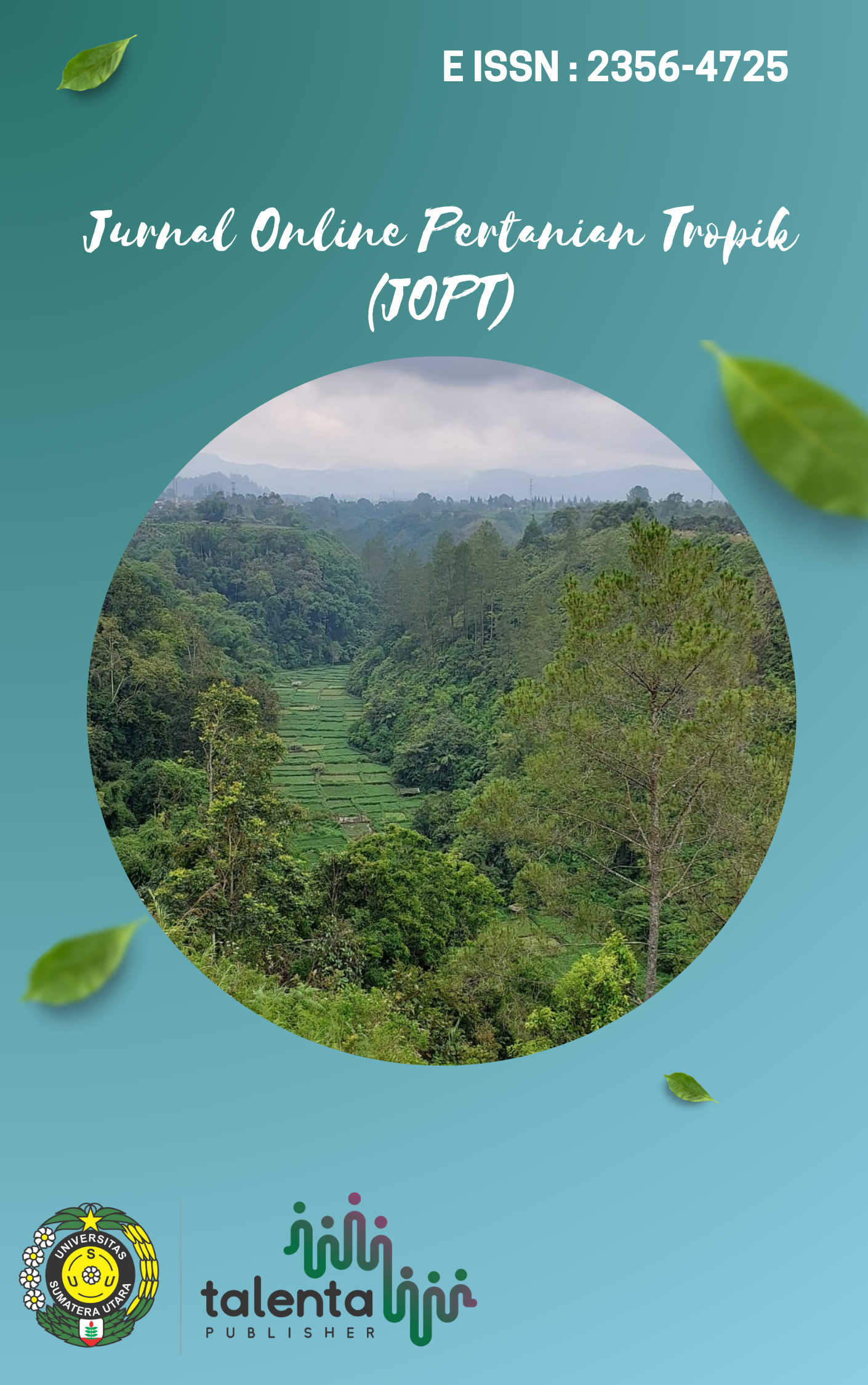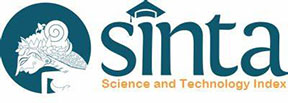Comparative Study of Bioinsecticide Quality of Bintaro Leaf (Cerbera odollam G.) between Laboratory and Pilot Scale
DOI:
https://doi.org/10.32734/jpt.v12i1.20019Keywords:
Bintaro, Quality, Bioinsecticide, Pilot ScaleAbstract
Bioinsecticide constitutes a sustainable solution to mitigate the deleterious consequences of excessive reliance on synthetic insecticides. Bintaro (Cerbera odollam Gaertn.) is a promising candidate for bioinsecticide production due to its efficacy. However, it is imperative to note that the scale of production significantly impacts the process conditions and the quality of the resulting products. To this end, a comparative study was conducted on the manufacturing of bintaro leaf bio-insecticide on a pilot scale.
The objective of this study is to ascertain the discrepancy in saponin content, water content, and toxicity of bintaro extract between laboratory and pilot scale. This study uses the reference of previous research where the best treatment of material to solvent ratio 1:10 (w/v) was obtained, namely using 15 grams of bintaro leaf material and 150 ml of solvent with 7 cycles of socletation. In the pilot scale study there was an increase in the amount of material used to 2 kg of dried bintaro leaves and 30 liters of methanol solvent. The results showed that the crude extract of bintaro leaves had a yield of 27%, saponin content of 0.63%, water content of 19.35%, and toxicity level of 45.33%.
Downloads
References
Djunaedy, Achmad. (2009). Biopestisida sebagai pengendali organisme pengganggu tanaman (opt) yang ramah lingkungan. Embryo, 6(1), 88-95.
Gaillard, Y., Krishnamoorthy, A., & Bevalot, F. (2004). Cerbera odollam: a ‘suicide tree’and cause of death in the state of Kerala, India. Journal of ethnopharmacology, 95(2-3), 123-126.
Kristiana, I. D., Ratnasari, E., & Haryono, T. (2015). Pengaruh ekstrak daun bintaro (Cerbera odollam) terhadap mortalitas larva nyamuk Aedes aegypti. Jurnal Lentee-raBio, 4(2), 131.
Ma, L., Chen, Y., Peng, S., Wang, X., Chen, L., Wang, R., ... & Luo, J. (2015). Study on extraction of tea saponin from Camellia oleifera cake using water as extraction solvent. Agricultural Science & Technology, 16(5), 1078.
Mien, D. J., Carolin, W. A., & Firhani, P. A. (2015). Penetapan kadar saponin pada ekstrak daun lidah mertua (Sansevieria trifasciata Prain varietas S. Laurentii) secara gravimetri. Jurnal Ilmu dan Teknologi Kesehatan, 2(2), 65-69.
Prasetyani, E. T. (2010). Pengendalian hama tanaman sayuran dengan cara murah, mudah, efektif dan ramah lingkungan. CEFARS: Jurnal Agribisnis Dan Pengembangan Wilayah, 2(1), 34-42.
Sa'diyah, N. A., Purwani, K. I., & Wijayanti, L. (2013). Pengaruh ekstrak daun bintaro (Cerbera odollam) terhadap perkembangan ulat grayak (Spodoptera litura F.). Jurnal Sains dan Seni ITS, 2(2), E111-E115.
Soetarno, S., & Soediro, I. S. (1997). Standarisasi Mutu Simplisia dan Ekstrak Bahan Obat Tradisional. Presidium Temu Ilmiah Nasional Bidang Farmasi.
Sudarmadji, S., & Bambang, H. (1996). Prosedur Analisa untuk Bahan Makanan dan Pertanian, edisi ketiga. Liberty. Yogyakarta, 137.
Suherman, A. (2016). Pengaruh Jumlah Sirkulasi Sokletasi Terhadap Kadar Saponin Daun Bintaro (Cerbera Odollam G.) (Doctoral dissertation, Universitas Brawijaya).
Tarmadi, D. (2013). Aktivitas Larvasida Ekstrak Bintaro (Cerbera manghas) terhadap Larva Nyamuk (Aedes aegypti)(Diptera; Culicidae) (Doctoral dissertation, Tesis. IPB. Bogor, Indonesia).
Utami, S. (2011). Bioaktivitas insektisida Nabati Bintaro (Cerbera Odollam Gaertn.) sebagai pengendali hama Pteroma plagiophleps Hampson dan Spodoptera litura F.
Utami, S. (2010). Aktivitas insektisida bintaro (Cerbera odollam Gaertn) terhadap hama Eurema spp. pada skala laboratorium. Jurnal Penelitian Hutan Tanaman, 7(4), 211-220.
Yan, X., Tao, F., & Ping, T. W. (2011). Chemical and bioactivity of mangrove plants in the genus cerbera. Journal of Guangxi Academy of Science, 1(1), 1-8.
Yosephine, F. (2011). Pengaruh Rasio Biji Teh/Pelarut Air dan Temperatur pada Ekstraksi Saponin Biji Teh secara Batch. Research Report-Engineering Science, 2.
Downloads
Published
How to Cite
Issue
Section
License
Copyright (c) 2025 Jurnal Online Pertanian Tropik

This work is licensed under a Creative Commons Attribution-ShareAlike 4.0 International License.






















